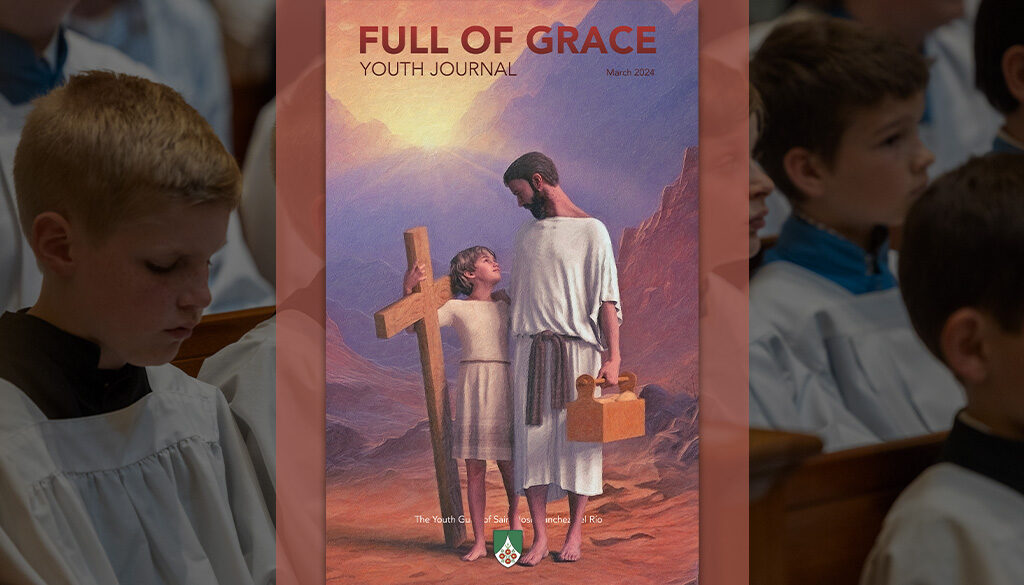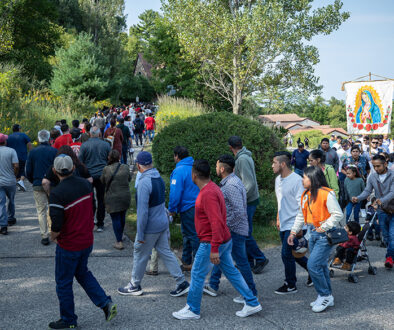Holiness as His Children
In this month’s Full of Grace Youth Journal, we’re continuing our journey through the liturgy. In March our focus is the Mosaic liturgy—the structured worship God revealed to Moses which is contained in the book of Leviticus.
Studying the strict precepts given about sacrifice and worship in Leviticus can be confusing. Why did God command such particular worship? And why don’t we observe the Old Testament feasts and sacrifices?
Almighty and All Holy
To answer these questions, first we should understand that the two main concerns of Leviticus are holiness of life and worship. God is almighty and all holy, and so is inaccessible to man. But despite this, He dwells in the midst of His people. The story of the Old Testament is God not only requiring love and worship, but also training His people to live in holiness as His children—something foreign to all other religions of the ancient world.
Lamb of God
To understand Leviticus, it’s important to understand the idea of sacrifice. With original sin, man became unworthy to offer himself as a pure sacrifice to God through his daily life. Therefore, sacrifice was needed as a way to remain in right relationship with God and to atone for sins.
Before Israel was established a nation, every family could offer sacrifice on their own. But with nationhood and with greater temptations to stray from God amid pagan nations, a priesthood was established to offer sacrifice on behalf of the people.
However, even this sacrifice was not perfect. It was impossible to offer a truly pleasing offering to the Lord. Until the expected Messiah came, God wanted man to offer sacrifice so that he would recognize his dependance on God. The sacrifices of the Old Testament were only symbols of Jesus Christ’s own sacrifice as a spotless victim acceptable to God. Only Christ could offer Himself to God and restore man to righteousness and to friendship with God.
Christ’s Sacrifice
Why do we no longer observe the Old Testament sacrifices? With Christ’s one, true, sacrifice, the Old Law was fulfilled, and the bloody sacrifices of Leviticus were no longer needed. The sacrifice of Calvary is renewed in an unbloody manner at every Mass when the bread and wine become the Body, Blood, Soul, and Divinity of Jesus. With Baptism and the Eucharist, we receive God’s very life in our souls—something the precepts of Leviticus could only foreshadow.
The Youth of the Church
If you know a youth who would benefit from receiving monthly editions of Full of Grace, where they’ll dive into the liturgy and other aspects of their faith, sign them up today! Enroll them in The Youth Guild of Saint José Sánchez del Río at YouthGuild.org.
Full of Grace
Full of Grace is a monthly journal for those enrolled in The Youth Guild of Saint José Sánchez del Río. Each journal includes a feature on a young saint or blessed, a daily consecration to Our Lady of Fatima, prayer cards and memory verses, Q&A, and art submitted by members of the guild!
Any youth is welcome to enroll. At their enrollment, youths will receive four special benefits:
- On the Feast Day of Saint José Sánchez del Río, February 10, the Shrine will host a special Mass for the youth guild, at the conclusion of which the celebrant will bless guild members with a first-class relic of Saint José Sánchez del Río.
2. The youths enrolled in the Guild are remembered in the Prayers of the Faithful daily during Holy Mass.
3. As members are commended to the special intercession of Saint José Sánchez del Río, each guild member receives a medal of the young saint.
4. Members receive monthly editions of Full of Grace.




